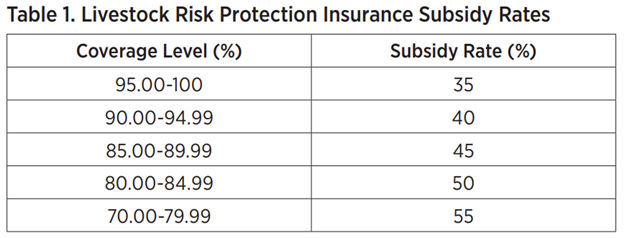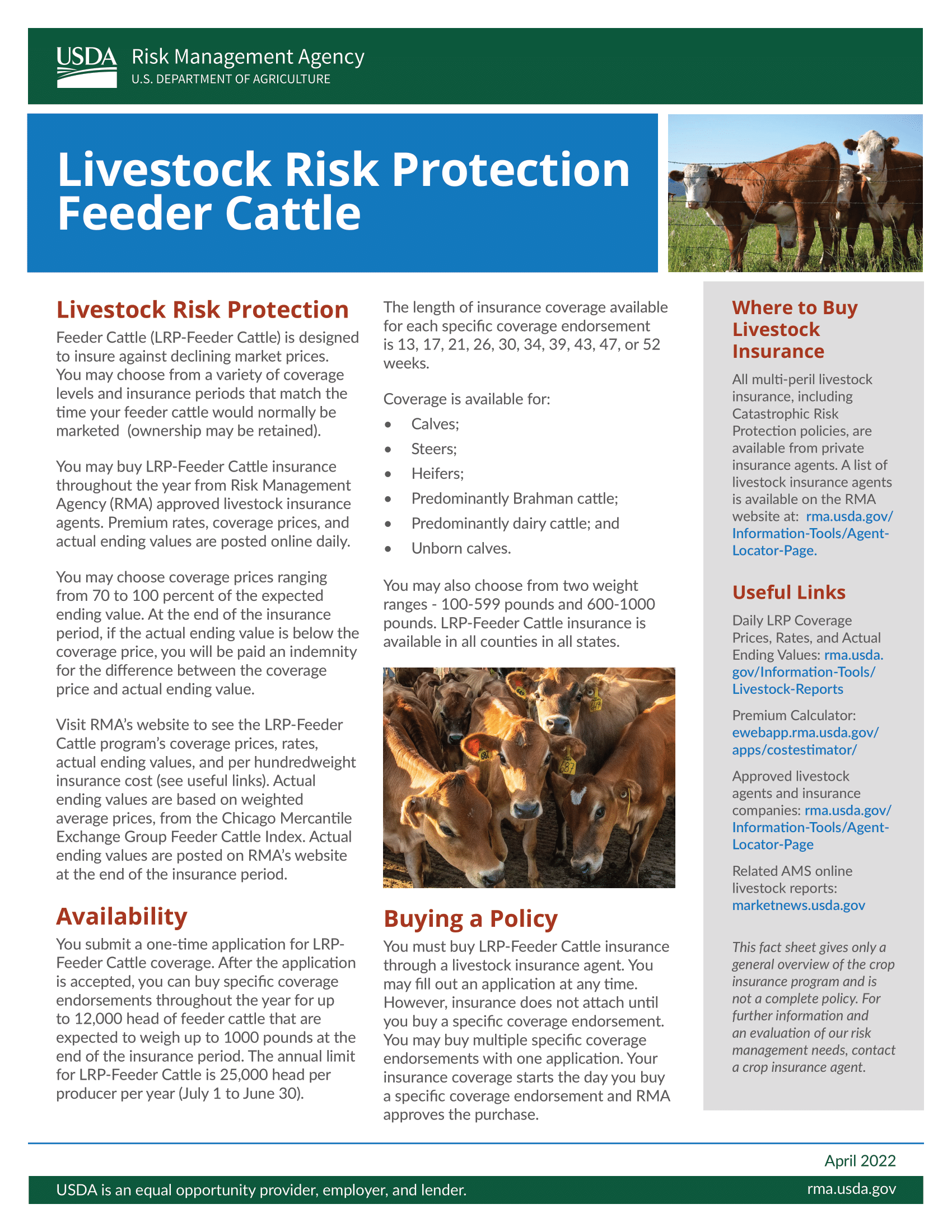Understanding Livestock Threat Security (LRP) Insurance Coverage: A Comprehensive Guide
Navigating the realm of livestock danger protection (LRP) insurance coverage can be a complicated venture for several in the farming field. From how LRP insurance functions to the different protection choices offered, there is much to discover in this detailed overview that might potentially form the means animals manufacturers approach risk monitoring in their businesses.

Exactly How LRP Insurance Works
Periodically, understanding the mechanics of Livestock Risk Security (LRP) insurance coverage can be intricate, yet damaging down how it works can supply clearness for herdsmans and farmers. LRP insurance coverage is a danger administration device developed to shield livestock producers versus unforeseen price decreases. It's crucial to keep in mind that LRP insurance policy is not a profits guarantee; instead, it focuses exclusively on rate threat protection.
Eligibility and Coverage Options

When it comes to insurance coverage options, LRP insurance uses producers the adaptability to choose the protection level, protection period, and recommendations that best suit their threat monitoring requirements. By comprehending the eligibility requirements and protection choices offered, animals manufacturers can make enlightened choices to handle danger efficiently.
Benefits And Drawbacks of LRP Insurance
When evaluating Animals Danger Protection (LRP) insurance policy, it is essential for animals manufacturers to evaluate the advantages and drawbacks inherent in this threat monitoring tool.

One of the primary advantages of LRP insurance policy is its capability to give protection against a decline in livestock rates. This can aid secure manufacturers from economic losses resulting from market variations. Additionally, LRP insurance policy provides a level of adaptability, allowing manufacturers to customize insurance coverage levels and plan periods to fit their specific needs. By securing an ensured cost for their livestock, manufacturers can much better manage threat and strategy for the future.
One restriction of LRP insurance coverage is that it does not shield against all types of risks, such as condition break outs or natural catastrophes. It is vital for producers to very carefully evaluate their private risk exposure and financial circumstance to identify if LRP insurance is the ideal risk monitoring device check my reference for their operation.
Comprehending LRP Insurance Policy Premiums

Tips for Making The Most Of LRP Conveniences
Making best use of the advantages of Animals Risk Defense (LRP) insurance coverage calls for tactical preparation and proactive threat management - Bagley Risk Management. To take advantage of your LRP protection, think about the complying with ideas:
Frequently Examine Market Problems: Remain educated regarding market patterns and cost changes in the animals industry. By keeping an eye on these aspects, you can make enlightened choices regarding when to buy LRP protection to safeguard against potential losses.
Establish Realistic Insurance Coverage Degrees: When choosing coverage degrees, consider your manufacturing prices, market price of animals, and prospective dangers - Bagley Risk Management. Setting see page reasonable coverage degrees ensures that you are effectively secured without overpaying for unnecessary insurance
Expand Your Protection: Instead of counting exclusively on LRP insurance, consider expanding your danger management strategies. Incorporating LRP with various other risk administration tools such as futures contracts or alternatives can give comprehensive protection against market unpredictabilities.
Evaluation and Readjust Protection On a regular basis: As market problems change, regularly evaluate your LRP insurance coverage to ensure it lines up with your existing danger exposure. Readjusting coverage degrees and timing of purchases can aid enhance your risk security strategy. By complying with these tips, you can optimize the benefits of LRP insurance policy and protect your animals operation versus unforeseen threats.
Final Thought
To conclude, animals risk defense (LRP) insurance coverage is a valuable tool for farmers to take care of the financial threats related to their animals operations. By comprehending how LRP functions, eligibility and insurance coverage choices, along with the pros and disadvantages of this insurance, farmers can make enlightened choices to shield their source of incomes. By very carefully taking into consideration LRP premiums and carrying out approaches to optimize advantages, farmers can reduce prospective losses and make certain the sustainability of their procedures.
Animals manufacturers interested in obtaining Animals Risk Protection (LRP) insurance coverage can discover a range of eligibility requirements and protection choices customized to their certain animals procedures.When it comes to protection choices, LRP insurance coverage uses producers the flexibility to select the insurance coverage degree, insurance coverage period, and recommendations that best match their risk administration needs.To grasp the details of Animals Threat Defense (LRP) insurance policy totally, recognizing the aspects influencing LRP insurance coverage premiums is important. LRP insurance costs are determined by numerous components, including the coverage level selected, the expected cost of animals at the end of the insurance coverage period, the type of animals being insured, and the length of the protection duration.Evaluation and Change Protection Consistently: As market problems transform, periodically review your LRP coverage click here to find out more to ensure it lines up with your present risk exposure.